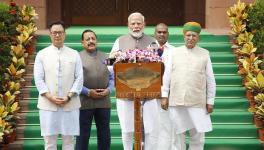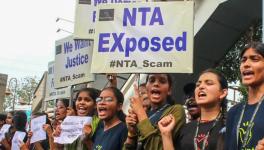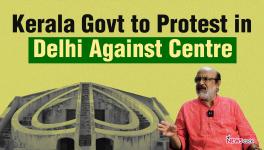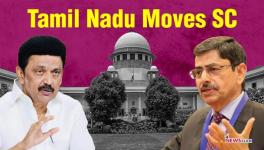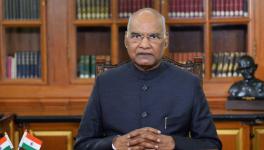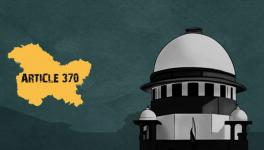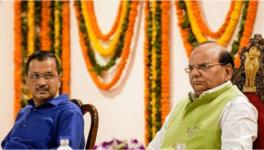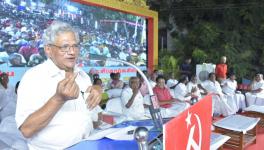Who Controls Delhi’s Civil Servants? Supreme Court Sets Out to Decide

THIS week, the tussle between the Union Government and the Government of the National Capital Territory of Delhi (‘NCTD’) played out in the Supreme Court again, as a Constitution bench began hearing arguments on the administrative control over transfers and postings of civil servants in the NCTD.
What is the case about?
In the present case, under review is Entry 41 of the State List contained in the Seventh Schedule to the Constitution, which relates to ‘State public services and State Public Service Commission’ and a notification issued by the Union Government in May 2015 excluding ‘services’ under Entry 41 from the legislative and executive domain of the NCTD. Yet, the case is likely to have implications beyond the ambit of the dispute; in particular, on Delhi’s endeavour of procuring full statehood.
The bench, comprising Chief Justice of India (‘CJI’) Dr. D.Y. Chandrachud, and Justices M.R. Shah, Krishna Murari, Hima Kohli and P.S. Narasimha, is currently in the process of hearing the Delhi government’s appeal against a Supreme Court two-judge bench’s inconclusive verdict on ‘services’ from 2019. The bench had then been called upon to adjudicate on specific, smaller disputes not dealt with by the Constitutional bench judgment of 2018 on the special status of Delhi.
Senior Advocate Abhishek Manu Singhvi, for the Delhi government, argued that once a civil servant is allotted to the NCTD, the power to allocate them work, to appoint them to departments within Delhi and transfer them between various departments must rest solely with the Delhi government.
To nullify the Supreme Court’s 2018 judgment, the Union Government introduced the GNCTD (Amendment) Act, 2021, which states, among other things, that the expression ‘government’ shall mean the LG, instead of the GNCTD.
Otherwise, “You are giving me a gear system which I cannot change… All the levers of the gear movement are in somebody else’s hand. This system can’t work. The car can’t move”, Singhvi said. Advocate Shadan Farasat appeared alongside Singhvi for the Delhi government, briefing the bench on the administrative practices followed in national capitals of other countries.
Meanwhile, the Solicitor General of India (SGI), Tushar Mehta, framed the matter as a mere “perception issue” on the second day of hearing, stating that “a perception has been created that the Lieutenant Governor is supreme and officers have their allegiance elsewhere”. Retorting to Singhvi’s driving metaphor, Mehta said, “It is the elected body which is in the seat of driving.”
However, on the third day of the hearing, Mehta stated that, as a capital city, Delhi possesses strategic importance and hence, must be under the effective control of the Union Government. “People in the National Capital enjoy benefits and must be ready to pay some price,” Mehta said.
The CJI framed the question at hand as, “Should the control on public services lie exclusively with one, or another, or should there be a median?”
What is the background of the case?
The 2018 Constitutional bench judgment of the Supreme Court was delivered in appeal against a Delhi High Court judgment of 2016 that had ruled that the Lt. Governor (‘LG’) exercised “complete control of all matters regarding National Capital Territory (NCT) of Delhi.”
Overturning the high court’s judgement, the Supreme Court in Government of NCT of Delhi versus Union of India & Anr. (2018) interpreted the provisions of Article 239AA to hold that the executive power of the Government of NCTD (GNCTD) was co-extensive with its legislative power. The court held that the LG had no independent decision-making powers, and was bound to follow the aid and advice of the council of ministers of the GNCTD in all matters on which the GNCTD is permitted to enact laws.
The Constitutional bench had clarified that the legislative power of the GNCTD extended to all matters in the State List except Entries 1 (public order), 2 (police) and 18 (land) and also to the Concurrent List. However, the court confirmed the LG’s power to refer any matter to the President, in case of a dispute of opinion between the LG and the GNCTD, under Article 239AA(4).
To nullify the judgment, the Union Government introduced the GNCTD (Amendment) Act, 2021, which states, among other things, that the expression ‘government’ shall mean the LG, instead of the GNCTD. The 2021 Amendment is also under challenge through a different petition before the Supreme Court.
Since the five-judge bench had left specific matters to be decided later by regular benches, a division bench comprising Justices Ashok Bhushan and A.K. Sikri was set up. One of the issues before the bench was whether the exclusion of ‘services’ relatable to Entry 41 from the legislative and executive domain of the NCTD, vide the notification of the Union Government dated May 21, 2015, was unconstitutional or illegal.
An affidavit filed at the Supreme Court by Deputy Chief Minister of the GNCTD, Manish Sisodia, claims that senior civil servants functioning under his departments routinely skip meetings, sending junior officers instead, and fail to pass on relevant information and files, among other things.
Neither of the two judges showed a predilection to grant the control over civil servants solely to the GNCTD. Justice Bhushan categorically held that Delhi, being a Union Territory, did not qualify under Entry 41 of the State List and hence, the GNCTD had no power over the administrative services. Meanwhile, Justice Sikri was inclined to adopt a middle path, involving both the Chief Minister and the LG, but held that the transfer or postings of the officer in top echelons of the bureaucracy (joint director and above) could only be done by the Union Government.
In view of the inconclusive verdict on ‘services’, the matter was first referred to a two-judge bench, and then to the present five-judge Constitutional bench on Union Government’s request on May 6 last year.
What have been the Delhi Government’s contentions?
Appearing for the GNCTD, Singhvi stated at the outset that the present case was “not merely about distribution of powers and the balance of power” between the Union Government and the GNCTD. “At its core, it is about whether civil servants serving in the NCTD are accountable to the government and then to the people who elected the government.”
He further contended that the exclusion results in an “impossible-to-conceive” situation where civil servants who are responsible for implementing the policies of their departments are “serving under a different master.” He alleged that this leads to “complete insubordination and chaos.”
“Any government, to exist, has to have the ability to create posts, appoint staff to posts and interchange them, according to efficiency and competency of a person. Unless a state government has this power, it cannot function,” the GNCTD submitted.
Citing the example of the Jammu and Kashmir Reorganisation Act, 2019 which bifurcated the erstwhile state of Jammu and Kashmir into two Union territories (Ladakh, and Jammu and Kashmir) and gave the Jammu and Kashmir Union Territory Legislative Assembly the power to make laws on ‘public service’, Singhvi said that “provisions of this Act authoritatively disprove the argument that Entry 41 is not available to Union Territories.”
“A Union Territory is nothing but an extension of the Union and there can be no concept of federalism between the Union and its limb”, SGI Mehta said.
An affidavit filed at the Supreme Court by Deputy Chief Minister of the GNCTD, Manish Sisodia, claims that senior civil servants functioning under his departments routinely skip meetings, sending junior officers instead, and fail to pass on relevant information and files, among other things. This leads to “delayed action, inefficiency in performance [and] inadequacy of governance outcomes.”
What have been the Union Government’s contentions?
The SGI took the court through the history of Delhi’s evolving legal status, from the Government of India Act, 1935 till today, with Article 239AA of the Constitution, to show that the Union Government had always exercised a greater deal of control over Delhi’s administration in comparison to other states and Union territories.
Also read: Delhi, a history of governance: A look back at the legal journey from 1858 to 2018
“A Union Territory is nothing but an extension of the Union and there can be no concept of federalism between the Union and its limb”, Mehta said.
Contrary to popular belief, he claimed, the Union Government and the GNCTD have enjoyed a harmonious relationship. From 1992 till date, only seven matters were sent by the LG to the President of India on account of difference of opinion with the GNCTD, it was claimed as proof.
But at a different instance during the hearing, Mehta said that “a perception has been created that LG is supreme and that officers have allegiance elsewhere. It is not so.”
“I am not saying the bureaucracy should be loyal to the Central government but the Central government must have a say as to who will be appointed and who will head which department. They are bound by the transaction of business rules, reporting to the minister, taking orders from the minister, bound by instructions of the minister.”
Furthermore, only a state can have a public service commission under Part XIV of the Constitution, and the NCTD, being a Union territory, cannot have the power to constitute its own public service commission like other states, he argued.
Mehta claimed that the fact that the Union Government and the GNCTD have elected representatives from different political parties is proof enough that “everything has been working smoothly with political maturity. It is the elected body which is in the driving seat.”
Get the latest reports & analysis with people's perspective on Protests, movements & deep analytical videos, discussions of the current affairs in your Telegram app. Subscribe to NewsClick's Telegram channel & get Real-Time updates on stories, as they get published on our website.










